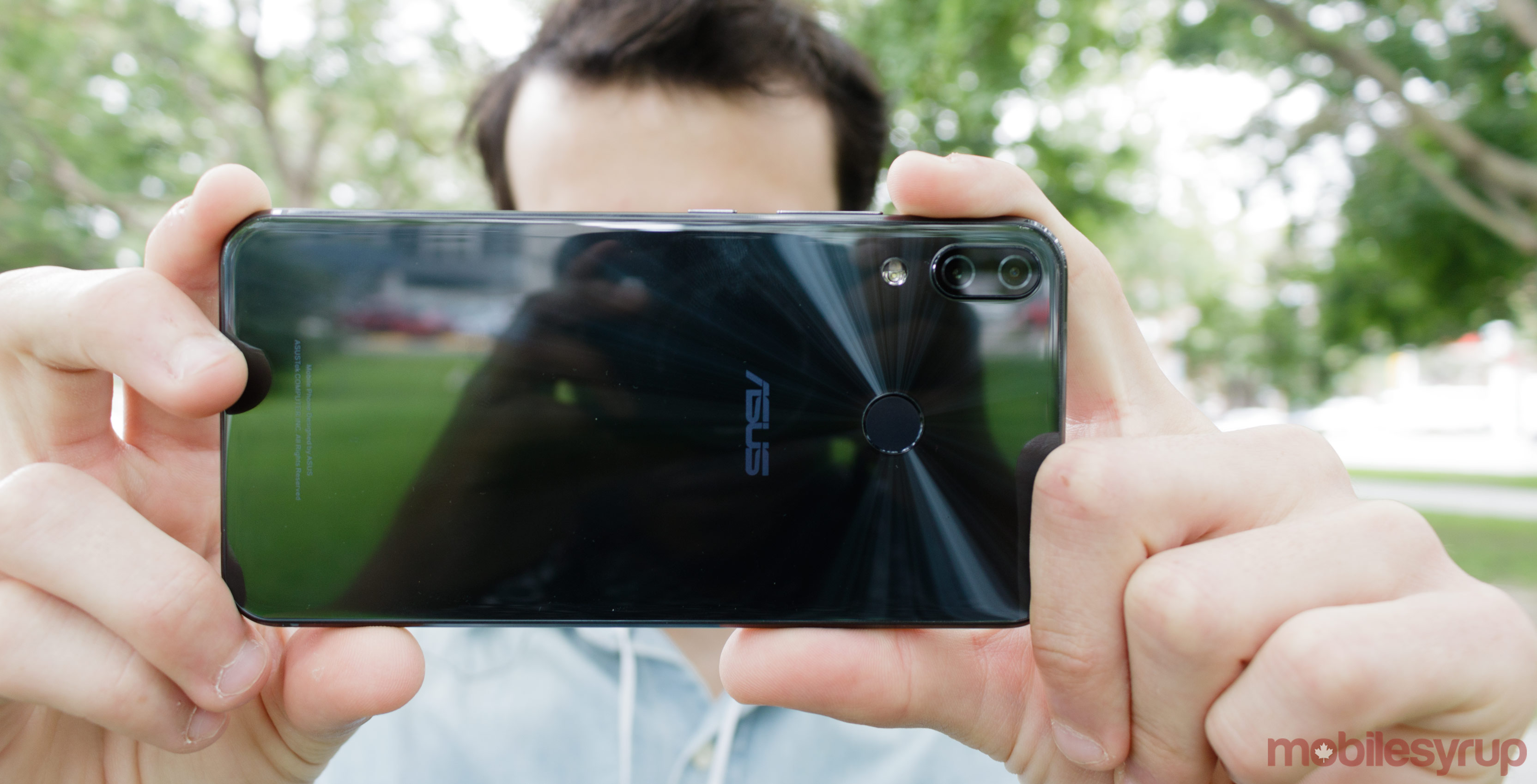
The Pros
- Silky Smooth Proccessor
- Day Long Battery
- Pretty Aesthetic
The Cons
- Lacks Wireless Charging
- Lacks IP68 Water resistance
- So much bloatware
Canadian consumers tend to look towards the latest iPhone, or Android handsets from the likes of Samsung and Google when thinking about buying their next device.
However, those looking for a new smartphone shouldn’t overlook this year’s Asus ZenFone 5Z. With day-long battery life, powerful processor and stylish exterior, other manufacturers should be wary of this flagship contender.
While the Asus ZenFone 5Z has quite a few flaws, the smartphone offers a terrific experience and is comparable to some of 2018’s greats.
Asus ZenFone 5Z
OnePlus 6
Samsung Galaxy Note 9
LG G7 ThinQ
Display
6.2-inch, IPS display, 1080 x 2246 pixels, 18:7:9 aspect ratio
6.28-inch AMOLED display, 2280 x 1080 pixels, 19:9 aspect ratio
6.4-inch, Super AMOLED, 1440 x 2960 pixels, 18:5:9 aspect ratio, HDR10
6.1-inch QHD+ display, 3120 x 1440 pixels, 19:5:9 aspect ratio
Processor
Snapdragon 845
Snapdragon 845
Snapdragon 845 (Exynos 9810)
Snapdragon 845
RAM
6GB of RAM
6GB, 8GB of RAM
6GB, 8GB of RAM
4GB of RAM
Storage
64GB (expandable up to 2TB)
64GB, 128GB, 256GB
128GB, 512GB (expandable up 512GB)
64GB
Dimensions (in.)
153 x 75.7 x 7.9mm
155.7 x 75.4 x 7.8mm
161.9mm x 76.4mm x 8.8mm
153.2 x 71.9 x 7.9mm
Weight
165g
177g
201g
162g
Rear Facing Camera
12-megapixel (f/1.8) + (120-degree wide-angle lens)
16-megapixel (f/1.7, OIS, EIS) + 20-megapixel (f/1.7)
12-megapixel (f/1.5-2.4, OIS) + 12-megapixel (f/2.4, OIS) dual-LED flash
16-megapixel (f/1.6) + 16-megapixel (f/1.9)
Front Facing Camera
8-megapixel (f/2.0)
16-megapixel (f/2.0)
8-megapixel (f/1.7)
8-megapixel (f/1.9)
OS
Android 8.0 Oreo
Android 8.1 Oreo
Android Oreo
Android 8.0 Oreo
Battery
3300mAh capacity
3,300mAh
4,000mAh
3,000mAh
Network Connectivity
GSM/HSPA/LTE
GSM/HSPA/LTE/Band 66
GSM/HSPA/LTE
GSM/HSPA/LTE
Sensors
Fingerprint (rear-mounted), accelerometer, gyro, proximity, compass, barometer, heart rate, SpO2
Fingerprint (rear-mounted), Barometer, Three-axis gyro, Accelerometer, Proximity sensor
Fingerprint (rear-mounted), Iris scanner, fingerprint (rear-mounted), accelerometer, gyro, proximity, compass, barometer, heart rate, SpO2
Fingerprint (rear-mounted), accelerometer
SIM Type
Dual Nano SIM
Dual SIM
Nano SIM
Nano SIM
Launch Date
February 27, 2018
May 16, 2018
August 9, 2018
May 3, 2018
Misc
Colour: Midnight Blue, Meteor Silver | AI Photo Learning, Face Unlock, Dual 5-magnet speakers, USB Type-C
Notched display, Colours: Mirror Black, Midnight Black, Silk White | Alert Slider, Bluetooth 5.0. Dash Charge (5V 4A), Face Unlock, water resistant
Colours: Ocean Blue, Midnight Black, Lavender Purple (U.S only) | Bluetooth S Pen, Samsung DeX with adapter, Fortnite, IP68 water and dust resistant
Notched display, Colour: Platinum Gray, Aurora Black |
Display
Asus ZenFone 5Z
6.2-inch, IPS display, 1080 x 2246 pixels, 18:7:9 aspect ratio
OnePlus 6
6.28-inch AMOLED display, 2280 x 1080 pixels, 19:9 aspect ratio
Samsung Galaxy Note 9
6.4-inch, Super AMOLED, 1440 x 2960 pixels, 18:5:9 aspect ratio, HDR10
LG G7 ThinQ
6.1-inch QHD+ display, 3120 x 1440 pixels, 19:5:9 aspect ratio
Processor
Asus ZenFone 5Z
Snapdragon 845
OnePlus 6
Snapdragon 845
Samsung Galaxy Note 9
Snapdragon 845 (Exynos 9810)
LG G7 ThinQ
Snapdragon 845
RAM
Asus ZenFone 5Z
6GB of RAM
OnePlus 6
6GB, 8GB of RAM
Samsung Galaxy Note 9
6GB, 8GB of RAM
LG G7 ThinQ
4GB of RAM
Storage
Asus ZenFone 5Z
64GB (expandable up to 2TB)
OnePlus 6
64GB, 128GB, 256GB
Samsung Galaxy Note 9
128GB, 512GB (expandable up 512GB)
LG G7 ThinQ
64GB
Dimensions (in.)
Asus ZenFone 5Z
153 x 75.7 x 7.9mm
OnePlus 6
155.7 x 75.4 x 7.8mm
Samsung Galaxy Note 9
161.9mm x 76.4mm x 8.8mm
LG G7 ThinQ
153.2 x 71.9 x 7.9mm
Weight
Asus ZenFone 5Z
165g
OnePlus 6
177g
Samsung Galaxy Note 9
201g
LG G7 ThinQ
162g
Rear Facing Camera
Asus ZenFone 5Z
12-megapixel (f/1.8) + (120-degree wide-angle lens)
OnePlus 6
16-megapixel (f/1.7, OIS, EIS) + 20-megapixel (f/1.7)
Samsung Galaxy Note 9
12-megapixel (f/1.5-2.4, OIS) + 12-megapixel (f/2.4, OIS) dual-LED flash
LG G7 ThinQ
16-megapixel (f/1.6) + 16-megapixel (f/1.9)
Front Facing Camera
Asus ZenFone 5Z
8-megapixel (f/2.0)
OnePlus 6
16-megapixel (f/2.0)
Samsung Galaxy Note 9
8-megapixel (f/1.7)
LG G7 ThinQ
8-megapixel (f/1.9)
OS
Asus ZenFone 5Z
Android 8.0 Oreo
OnePlus 6
Android 8.1 Oreo
Samsung Galaxy Note 9
Android Oreo
LG G7 ThinQ
Android 8.0 Oreo
Battery
Asus ZenFone 5Z
3300mAh capacity
OnePlus 6
3,300mAh
Samsung Galaxy Note 9
4,000mAh
LG G7 ThinQ
3,000mAh
Network Connectivity
Asus ZenFone 5Z
GSM/HSPA/LTE
OnePlus 6
GSM/HSPA/LTE/Band 66
Samsung Galaxy Note 9
GSM/HSPA/LTE
LG G7 ThinQ
GSM/HSPA/LTE
Sensors
Asus ZenFone 5Z
Fingerprint (rear-mounted), accelerometer, gyro, proximity, compass, barometer, heart rate, SpO2
OnePlus 6
Fingerprint (rear-mounted), Barometer, Three-axis gyro, Accelerometer, Proximity sensor
Samsung Galaxy Note 9
Fingerprint (rear-mounted), Iris scanner, fingerprint (rear-mounted), accelerometer, gyro, proximity, compass, barometer, heart rate, SpO2
LG G7 ThinQ
Fingerprint (rear-mounted), accelerometer
SIM Type
Asus ZenFone 5Z
Dual Nano SIM
OnePlus 6
Dual SIM
Samsung Galaxy Note 9
Nano SIM
LG G7 ThinQ
Nano SIM
Launch Date
Asus ZenFone 5Z
February 27, 2018
OnePlus 6
May 16, 2018
Samsung Galaxy Note 9
August 9, 2018
LG G7 ThinQ
May 3, 2018
Misc
Asus ZenFone 5Z
Colour: Midnight Blue, Meteor Silver | AI Photo Learning, Face Unlock, Dual 5-magnet speakers, USB Type-C
OnePlus 6
Notched display, Colours: Mirror Black, Midnight Black, Silk White | Alert Slider, Bluetooth 5.0. Dash Charge (5V 4A), Face Unlock, water resistant
Samsung Galaxy Note 9
Colours: Ocean Blue, Midnight Black, Lavender Purple (U.S only) | Bluetooth S Pen, Samsung DeX with adapter, Fortnite, IP68 water and dust resistant
LG G7 ThinQ
Notched display, Colour: Platinum Gray, Aurora Black |
Stylish Imitation
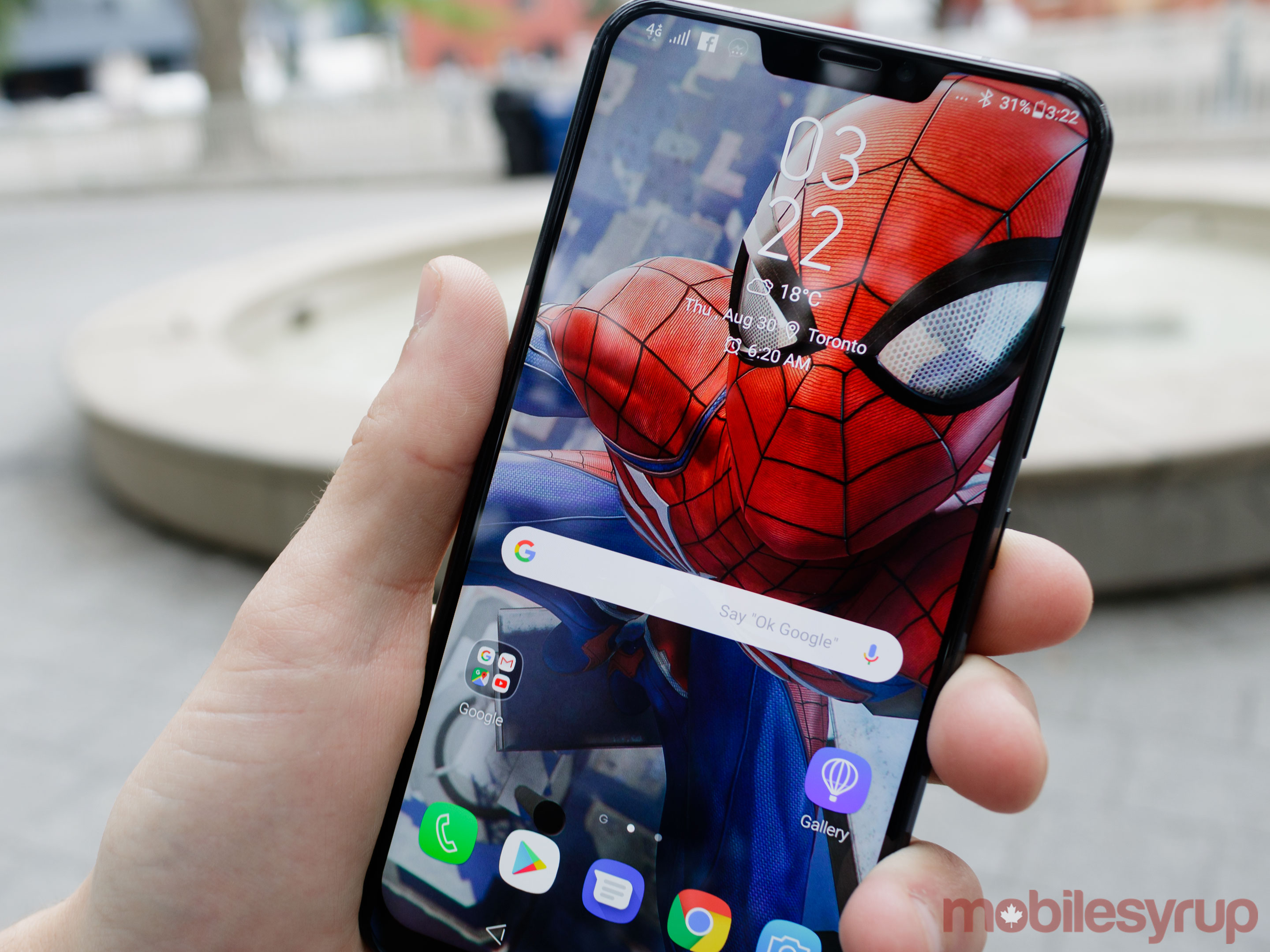
Aesthetically, the Asus ZenFone 5Z looks similar to many of the other notched smartphones revealed this year. However, the Taiwanese company was the first Android manufacturer to unveil a handset with an iPhone X-style notch when it showed off the 5Z at Mobile World Congress earlier this year.
The 5Z also has a minimal bottom bezel, thinner than both the Huawei P20 Pro and the OnePlus 6, as well as a vertical rear dual-camera setup, similar to the iPhone X.
Its rear features a varnish coat under its Corning Gorilla Glass that gives the phone the Zen-like concentric-circle patterning that reflects in the light.
While some people call this phone a clone of the iPhone X, there are stark differences: The ZenFone 5Z measures at 153mm x 75.7mm x 7.9mm, while the iPhone X comes in at 143.6 x 70.9 x 7.7mm making the ZenFone significantly larger. Not only is the 5Z overall larger than the iPhone X, but it also has a more prominent chin as well. However, the notch isn’t as wide.
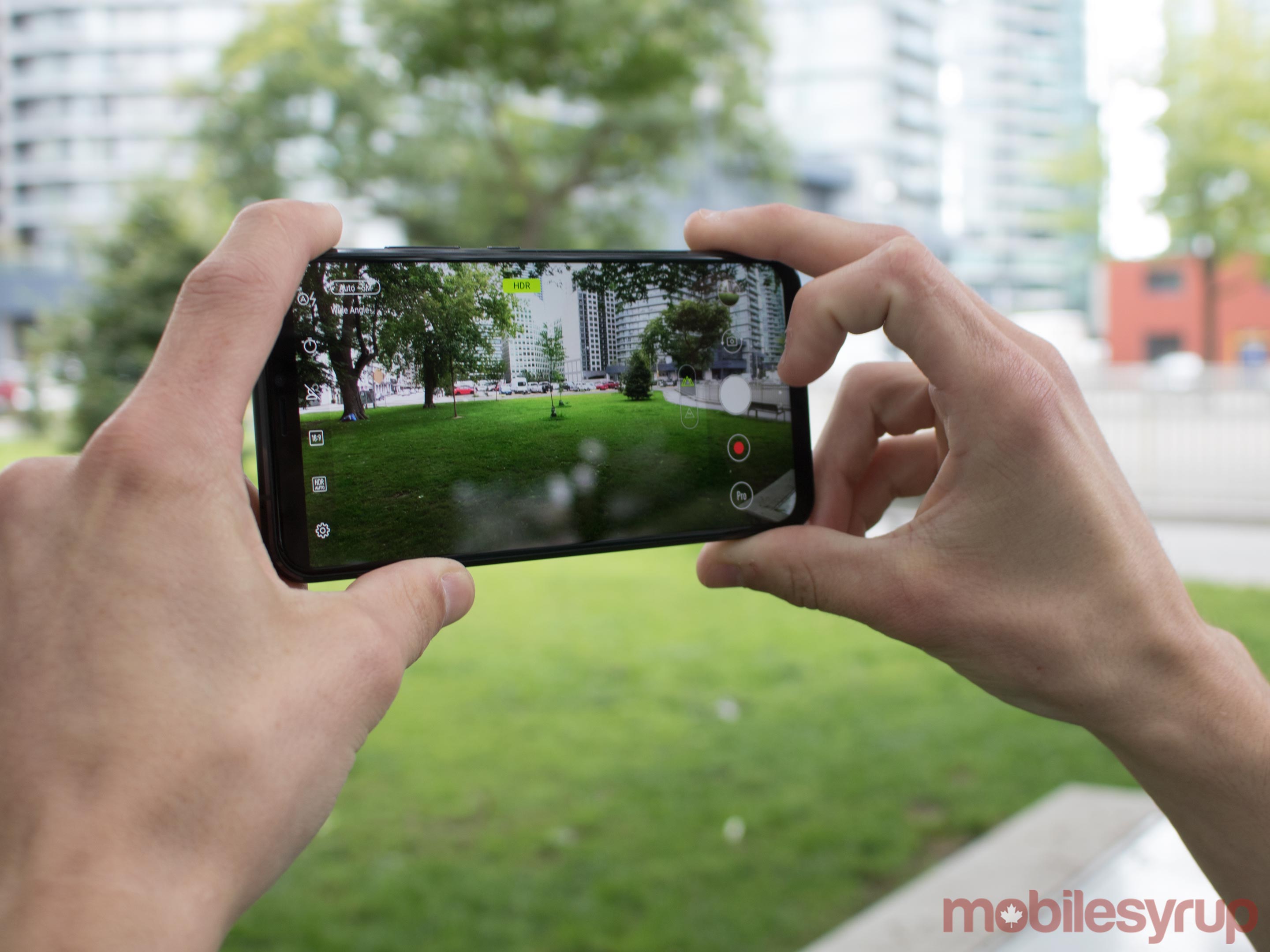
In-hand, the handset feels very solid weighing 165g, making it lighter than the Samsung Galaxy S9+, HTC U12+, OnePlus 6 and the Huawei P20 Pro. Even though it’s not the thinnest phone on the market, its sturdiness helps a lot with feeling more comfortable.
The Asus ZenFone 5Z features an IPS LCD display with a 1,080 x 2,246-pixel resolution that looks lacklustre in comparison to devices like the G7 ThinQ and the Galaxy S9.
And while the phone offers 95 percent DCI-P3 wide gamut coverage that reveals a wide range of colours and a crisp, profoundly saturated picture that I find manages to stay perfectly balanced between warm and cold tones. That said, no matter which viewing angle you look at it, it’s just not as good as other devices.
One issue with the screen is that only has a maximum brightness of 550 nits. Phones like the LG G7 ThinQ, the S9+ and even 2017’s iPhone X feature displays capable of attaining a display brightness between 700 to 1,000 nits.
Further, the lack of a quad-HD display makes the ZenFone 5Z feel less immersive than other handsets when watching videos on YouTube or Netflix. I watched shows on Netflix and YouTube, and will likely continue to on this handset. I didn’t feel like I was missing anything, but when side-by-side with the G7 ThinQ, I noticed the lack of vibrancy and life.
Silky smooth performance
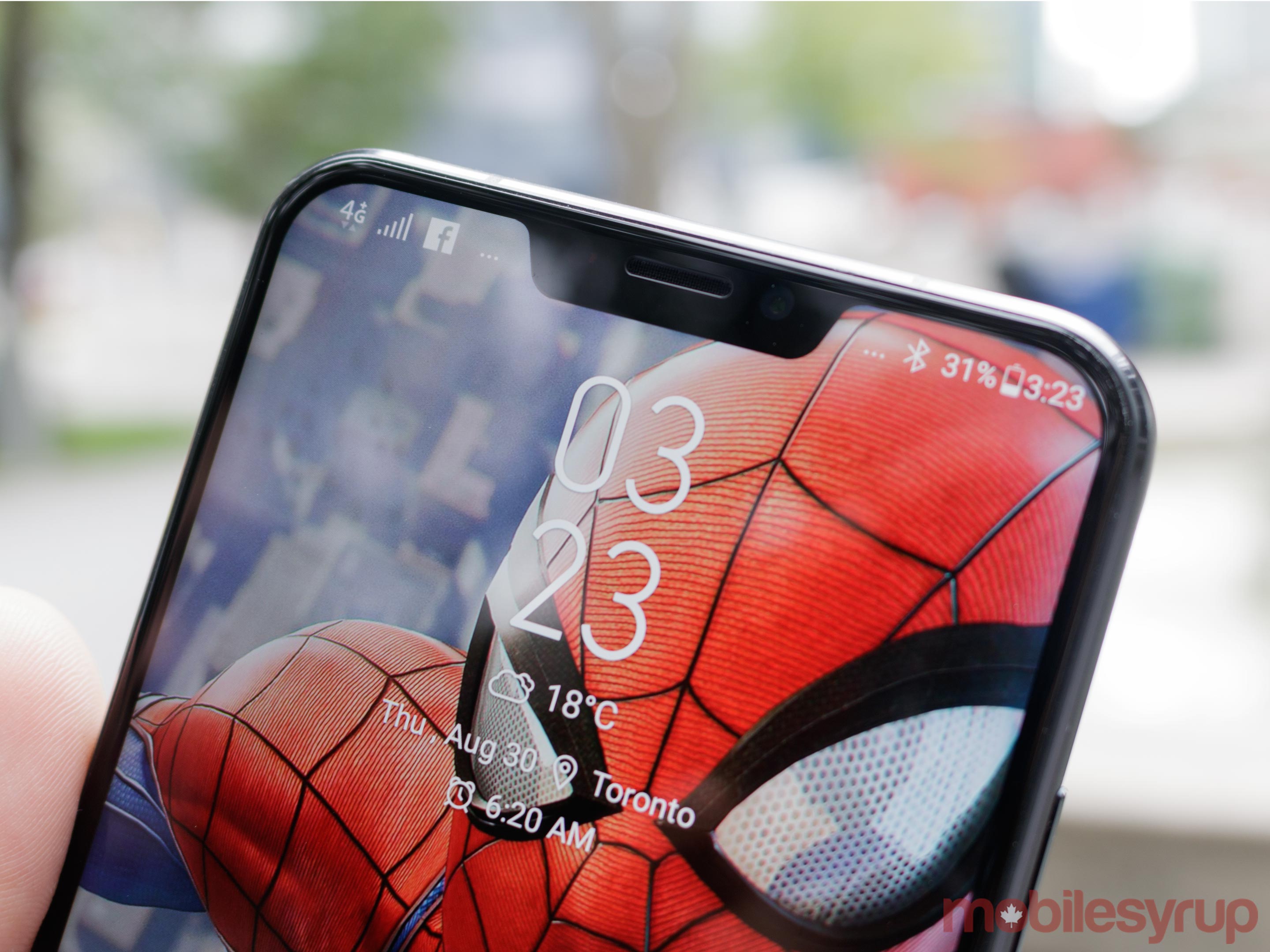
The Asus ZenFone 5Z offers exceptionally smooth performance. During my time with the device, I never experienced any lag or slow down. The phone doesn’t heat up whatsoever even while it’s charging. The aforementioned smooth performance makes sense as the handset features a Snapdragon 845 chipset and 6GB of RAM.
Other smartphones such as the Galaxy Note 8 and OnePlus 6 feature RAM options of up to 8GB of RAM, however, with what I was doing with the device, 6GB of RAM was good enough. An 8GB of RAM variant, however, it would have been nice for those who wanted or required the extra RAM.
I’m not typically a mobile gamer; however, I do use my phone a lot for watching movies, YouTube videos, browsing the internet and more. Even while multitasking with YouTube in a picture-in-picture box and reading an article on the Chrome browser with many apps in the background, the device ran smoothly.
Additionally, the handset has some impressive benchmark scores, so if you’re the type of person who cares about technical specs, take a look below. The phone even surpassed the benchmarks of the Galaxy Note 9. Also for those who require more memory than the 64GB that Asus offers, the phone features a microSD slot capable of carrying up to 512GB of extra memory.

The 5Z’s Android skin, however, is quite cumbersome.
The phone comes with a lot of bloatware apps. Asus packs its smartphones with many Asus-branded apps, and while they don’t cause any slowdown, the handset takes a little while to get accustomed to. However, unlike many other smartphones brands, the ZenFone 5Z can disable and hide apps in one swipe, similar to deleting a third-party app. This allowed me not to ignore the phone’s bloatware-apps. However, the skin still requires some time to get used to.
Some parts of the skin are strange, such as its Page Marker app. The Page Marker app allows users to download pages on a web browser for a later date. These downloaded pages can go to your Google Drive account so that users can take a look at from other connected devices, and also view them offline. However, seeing the little page marker button appear every time you’re on Google Chrome can be a bit annoying, especially when you don’t know what it is.
The phone offers a version of Face Unlock that operates nearly identically to Android’s stock facial recognition feature. While it doesn’t work as well as Huawei’s P20 Pro’s face unlocking, which is capable of operating under dark conditions, I found that the ZenFone 5Z’s facial recognition is capable of working under low-light, but that it sometimes takes multiple attempts.
Sub-par camera experience
The Asus ZenFone 5Z offers a dual rear-facing camera with 12-megapixel and 8-megapixel sensors.
The camera takes decent photos.
In good lighting, the camera takes accurate pictures showing a range of complex colours and contrasts. I was pleased with the phone’s daylight performance. However, in low-light situations, there was quite a bit more noise. Compared to handsets like the Huawei P20 Pro and the Galaxy S9+, the phone’s low light mode is very dull.
Both the front and rear-facing cameras offer a bokeh, depth-of-field feature that allows users to control how blurry the user wants the background. It’s easy to use, and I found that it did a pleasant job at keeping what I wanted in focus.
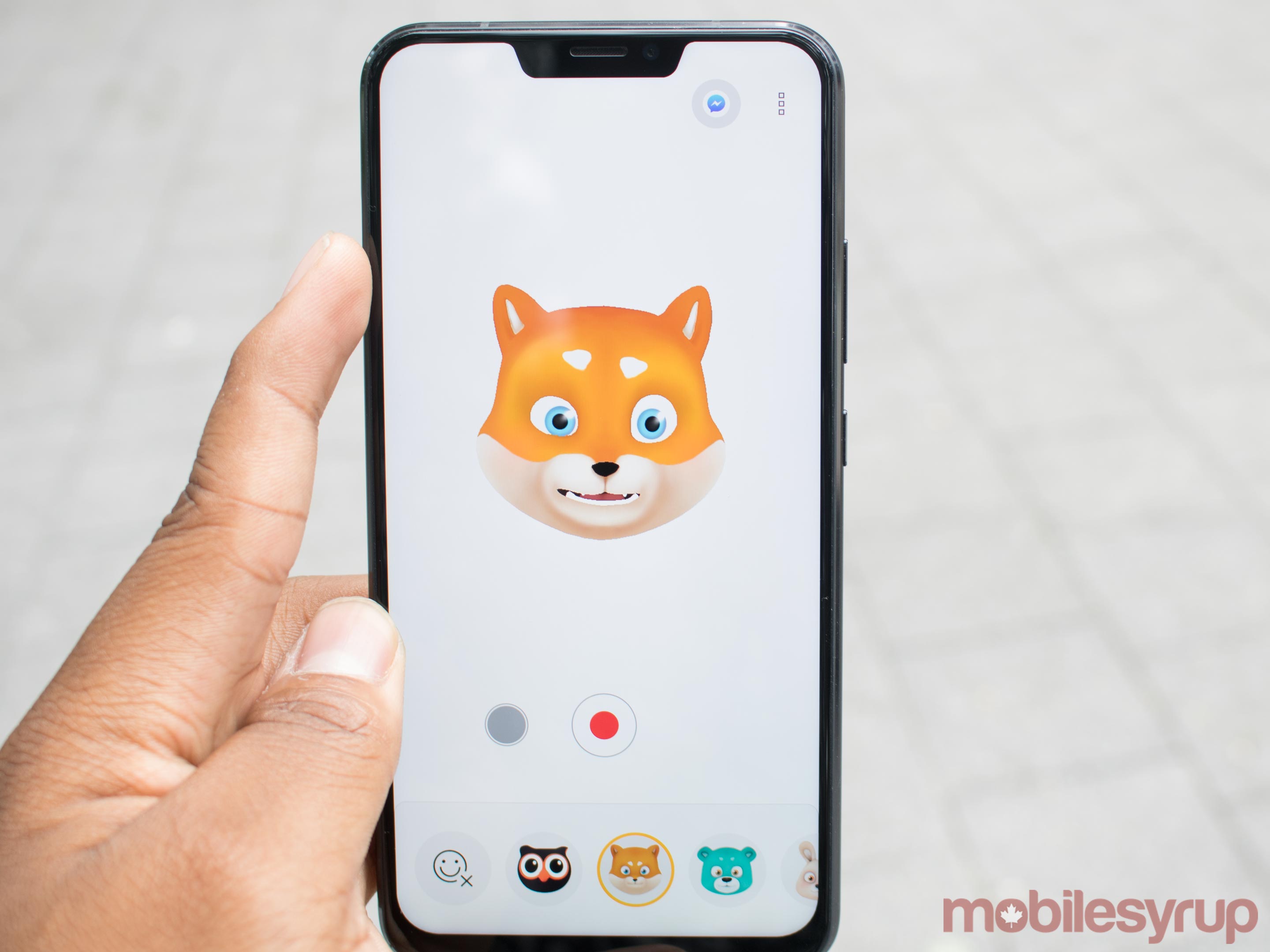
Additionally, the selfie mode, with its 8-megapixel camera, did a respectable job. In outdoor lighting, I was able to capture shots with a full range colour, that were a bit on the sharp side. The selfies were nothing spectacular like the HTC U12+. In fact, the selfie shooter is more on par with midrange LG handsets like the LG Stylo 3 Plus.
Asus has also added a new Zenimoji feature on its handset. Similar to Samsung and Apple users can take a quick video of themselves speaking with an animated character that’ll copy their facial movements. Unlike Samsung and Apple, the Zenimoji seems to be very slow and doesn’t accurately represent the user’s face. The characters are very cute though.
Maybe too loud
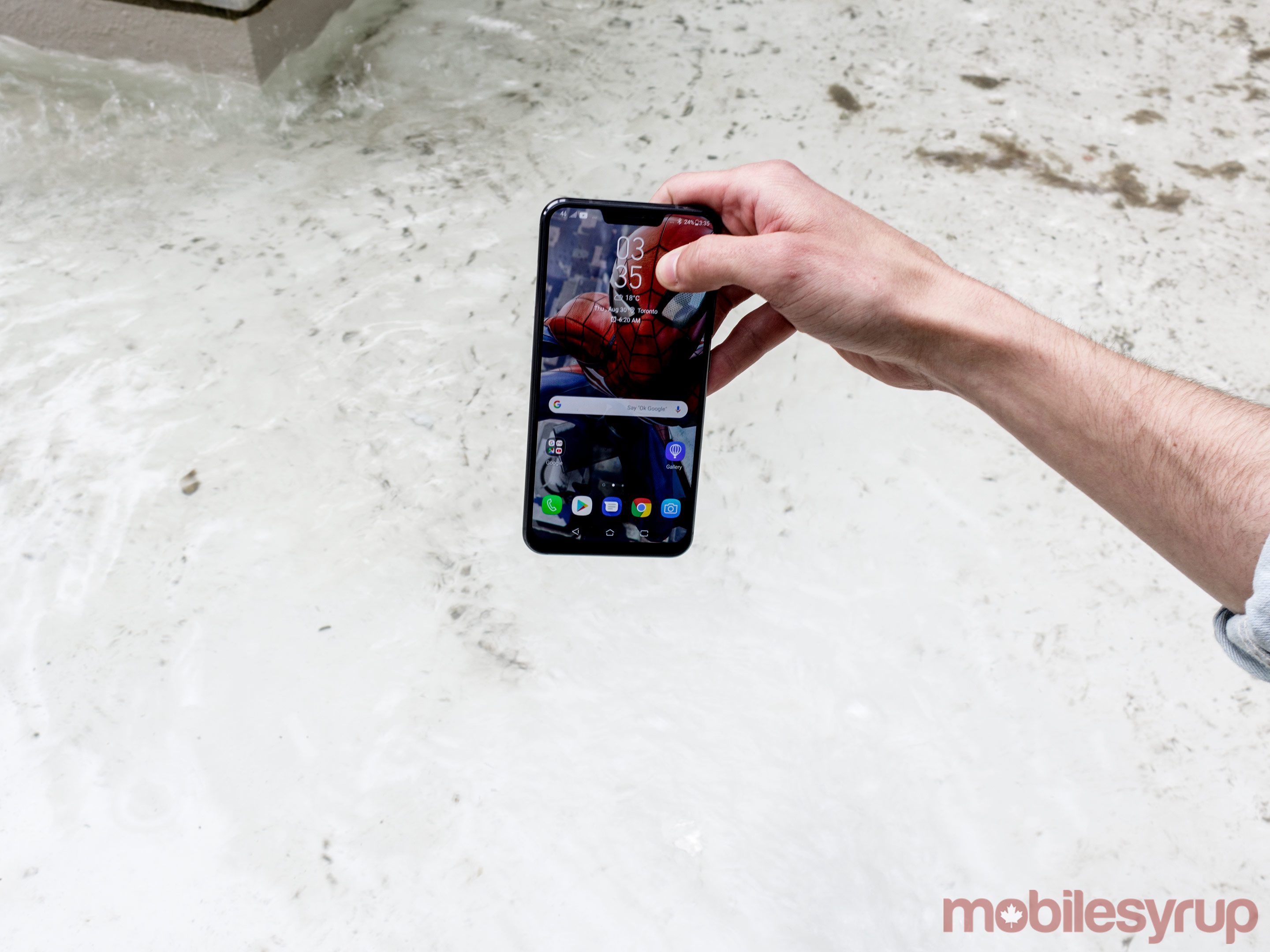
The Asus ZenFone 5Z delivers articulate sound.
It’s also very lush with a full range of frequencies that can get very loud. Additionally, the 5Z offers an ‘Outdoor mode’ that boosts the phone’s bass and volume quite a bit.
Unfortunately, the ‘Outdoor mode’ in indoor situations can sound boomy with an excess bass and loses its articulation, and words can sound blurry and hard to understand.
On average, Asus ZenFone 5Z offers a full day’s battery with around 15-20 percent left over at the end of the day. My days start at 6:15-6:30am and end around 11pm to midnight. These average days consist of Facebook, the occasional YouTube videos and texting.
Another day where I spent an hour of listening to music and nearly two hours watching YouTube videos, alongside Facebook usage, texting and other social media apps I found the battery only lasted until 10pm, again with my day starting at around 6:15-6:30am
Great, but not for everyone
The Asus ZenFone 5Z lacks some tools smartphone users might find essential in a device. First, the phone doesn't feature IP68 water resistance. And the lack of water resistance is something that some users may consider an immediate dismissal.
Second, the phone also doesn't feature wireless charging. Unfortunately, smartphones require a glass back for wireless charging, and with a full aluminium rear, the feature isn't present on the device.
Third, with the LTE bands available on the ZenFone 5Z, the phone will only experience 4G LTE with Telus, Rogers and Bell, in Canada, and their sub-brands. It'll also experience 4G LTE with Videotron. It's also not available to purchase at any major carrier, similar to OnePlus handsets
I enjoyed my time with the Asus ZenFone 5Z. It's a loud, aesthetically pleasing and powerful smartphone. It featured a significant amount of bloatware, which is a frustrating move on Asus' part. However, the ZenFone 5Z's battery life and low $799 price (at Best Buy and Amazon Canada) make it worth considering, especially considering the cost of powerhouse smartphones like the Note 9, S9 and the iPhone X.
I was quite impressed with the phone's snappiness and would argue that the days of Asus releasing underwhelming flagships are over.
If you don't need wireless charging, water resistance, the best display and don't mind disabling bloatware, the ZenFone 5Z is worth checking out.
"I was quite impressed by the phone's snappiness and would argue that the days of Asus' underwhelming flagships are over"
MobileSyrup may earn a commission from purchases made via our links, which helps fund the journalism we provide free on our website. These links do not influence our editorial content. Support us here.











